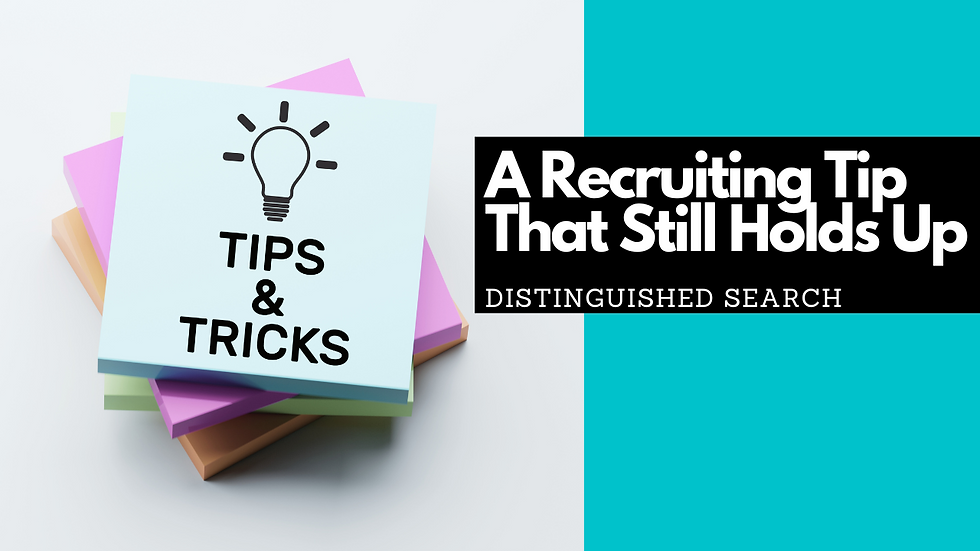7 steps to a diverse interview slate
- Somer Hackley

- Mar 11, 2020
- 2 min read
Updated: Mar 10, 2021
“We need a diverse slate.” – everyone
Clearly diversity is top of mind for all organizations. There are lots of opinions on how to attract diverse talent. I’ve seen companies tackle this in different ways, and there are some past clients of mine who I applaud for being the best of the best when it comes to talent acquisition, candidate experience and diversity.
Here are my two cents as to how we do this. I’m writing this with a diversity lens, but these can (and should) be applied as general best practices.
Understand your starting point: Is your brand conducive for a diversity hire? In general many positions stay unfilled for too long because we’re all in a huge rush to begin. Regarding diversity, there are some conversations that should happen before we kick off any search so that we can adjust the process if needed. If there is a current gap of diverse talent, what is the reason? Why have people withdrawn from your process in the past? Understanding these answers will ensure we set up the right foundation.
Understand the position: This is more than an hour intake call. Take the time to understand the culture, the role, the impact to the business, and how this fits in the overall company structure now and in the future. Understanding the position is different than understanding a desired background. Let’s think creatively about what types of backgrounds could fit; it’s not always obvious. Let’s broaden our reach.
Interview “in” vs “out”: Give people the benefit of the doubt. Truly know the core criteria you’re interviewing for and develop your / your team’s skill set in interviewing vs looking for external indicators that this person is a quality hire. (Meaning, over-indexing on people who have worked at certain companies, have certain degrees, live in certain locations may cause you to overlook other talent.) Consider interviewing for true potential and backing a quality superstar with the right resources to be successful. Another tip: tell someone after the interview why you think they’re not a fit. Their response may surprise you.
Be targeted and persistent: There’s a lot of noise out there. Executives I speak with are consistently approached with opportunities that are not a good fit for them. There are a lot of automated approaches happening these days. If you truly believe you’re targeting someone for all the right reasons, tell them. Be specific. Use multiple channels.
Listen and pivot: Pay attention to the feedback you or your recruiters are getting. Understand why candidates aren’t interested. Are there any recurring themes, and anything you can change?
Candidate experience: Your reputation matters. Word travels fast. People remember. The best recruiters and hiring managers are in it for the long haul. That candidate who is too junior today may very well be your perfect hire in three years. I’ve hung my hat on giving quality feedback and getting back to people. That’s how networks are created. Let’s set ourselves up for success for years to come.
Hiring panel: Have a diverse slate.
So as you may have guessed, there’s really no big secret. It comes down to best practices. Understanding the position, being an excellent interviewer, and always treating people as people. It’s easy to get tripped up in the day to day pressures, but recruiting is all about long term relationships. That, and recruiting.

photo credit https://jessicaarroyo.com/






Comments